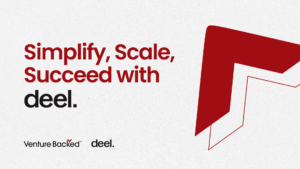You’ve poured countless hours and passion into building a product you believe in—but how can you be sure that the market can see its potential? Every startup starts with a vision, but without product-market fit, that vision is destined to fall short. Remember, this isn’t just about building a product you love; it’s inventing a solution that the market needs and cares about.
Achieving product-market fit is more than just a goal—it’s the foundation that determines the success of your startup; it is when your product isn’t merely something you sell, it becomes something your market is actively seeking. So, how do you know when you’ve hit the right balance between creating a product you’re passionate about and one that your market actually wants? In this guide, we’ll walk you through the key steps early-stage founders need to take to build and validate product-market fit, ensuring that your product aligns with the needs of your ideal market.
Understanding Product-Market Fit
Product-market fit is the powerful moment when your product truly clicks with your target audience, resonating with their struggles and desires. It’s when customers don’t just buy your product—they become avid consumers loyal to it, subsequently driving word-of-mouth and fueling organic growth. For instance, Dropbox started as a simple file-sharing tool, but didn’t achieve product-market fit until they released their referral program. They saw that users started inviting others, showcasing strong demand that helped Dropbox achieve a 3900% growth.
For early-stage startups, achieving product-market fit is the most important milestone that demonstrates your ability to not only innovate but also solve a pressing problem for your customers. When you hit this milestone, you can start to scale your business for long-term success, with a product that pretty much sells itself. This means less effort is required in marketing and promotion.
By leveraging product-market fit, you gain the clarity, confidence, and momentum needed to build on your success—turning your startup’s potential into sustainable growth. Here’s a step-by-step guide to help you navigate this stage and maximize its impact.
Step 1: Start with the Problem, Not the Product
Many founders tend to rush into product development without fully understanding their market or the pain points they need to address. The first step toward achieving product-market fit is answering one crucial question: Are you solving a real, immediate need? Identifying the right problem guides you toward building a successful product. Here’s how to find it:
- Define the problem your product solves: Clarify the issue your product is looking to solve and how it helps your target audience.
- Engage with potential customers: Conduct surveys or interviews to validate the problem, ensuring it’s real, urgent, and common.
- Evaluate existing solutions: Examine solutions customers are currently using and identify where they lack effectiveness.
- Ensure customers are willing to pay for a solution: Verify if the problem is relevant enough for your audience to invest in your product.
- Research competitors: Analyze competitors in your market to identify gaps and opportunities for standing out.
Step 2: Prototype Your Idea with a Minimum Viable Product (MVP)
Found the ideal problem you wish to tackle? Now it’s time to test the solution, but don’t expect to nail it on the first try. First, create a simplified version of your idea, focusing only on the core features needed to test and validate your concept—we call this the Minimum Viable Product (MVP). An MVP lets you quickly validate your assumptions and ideas cost-effectively. The aim is to get your product into users’ hands as soon as possible, gather feedback, and assess whether your solution meets their needs, without the need for significant time or financial investment.
Key steps to building your MVP
- Pinpoint your essential features: There’s no need to overcomplicate what you want to build, focus on the core functionality that solves your customers’ most pressing needs.
- Build quickly: At this stage, speed is more important than perfection—don’t be afraid to take messy actions! Utilize tools like Webflow, WordPress, or a basic landing page to create a simple version of your product to test out.
- Test with early adopters: Connect with users who have a solid grasp of your industry and the problem you wish to tackle. Their feedback will be crucial for enhancing your product.
Remember, your MVP is only the starting point. You have to continually test, learn, and iterate promptly using real user feedback to refine and improve your product. The more you do so, the better your chances are in creating a product-market fit.
Step 3: Look into Customer Feedback
Product-market fit isn’t just about attracting users; it’s about attracting the right users—those who see the value of your product and are willing to pay for it repeatedly. This requires you to have deep insights into your users’ needs, preferences, and pain points, which is where customer feedback comes in.
The Feedback Process:
Qualitative Feedback
Conduct interviews with early adopters to have a good grasp of their experience. Ask questions like, “How does this product solve your problem?” or “What does it lack to make it more useful?”. This feedback offers key insights into how users perceive your product and any remaining gaps to address.
Quantitative Feedback
Track user behavior with tools like Google Analytics or Mixpanel to identify common features, drop-off points, and engagement peaks. This data helps you identify patterns and prioritize key areas of improvement.
Tools to Collect Feedback
- Surveys: Use Typeform, Google Forms, or SurveyMonkey to gather structured feedback and identify common trends.
- Analytics: Tools like Mixpanel or Hotjar allow you to track detailed user behavior and interaction patterns, offering actionable insights.
- Customer Interviews: Conduct one-on-one sessions to uncover in-depth insights into user experiences and struggles. These conversations often reveal nuances that surveys and analytics might miss.
It is important to learn from your users to refine your product. Real feedback is key to making relevant improvements and ensuring that your product captures the pain points of your customers.
Step 4: Validate Your Progress Through Key Metrics
How do you know you’re making progress? Start by leveraging key metrics that measure user engagement (e.g., DAU/MAU ratio) and track retention to see if users return after their first experience. If users are consistently returning, it’s a strong sign you’re in the right direction.
For example, Slack’s early success was built on prioritizing retention over acquisition. By ensuring they delivered real value, they achieved organic growth.
Finally, don’t overlook user feedback—positive behaviors like referrals are a powerful sign that your product aligns with your target customers’ needs.
Step 5: Refine or Pivot Your Product Based on Data
Once you’ve collected all the necessary feedback and data, the next crucial thing to determine is: Do you take further risk and refine your product, or is it time to make a bold pivot? Your decision here can make or break your product’s path to success.
You may need to pivot if you’re seeing indications of low retention or user satisfaction, a continual lack of product-market fit despite several iterations, or if customers are not willing to pay for your product.
Next, it’s time to assess user engagement and satisfaction. If retention is declining, it could be time for a strategic change that realigns your product with what your customer needs. But if your metrics are strong, take this opportunity to double down and plan your next big move for scaling.
Step 6: Start Scaling Once You Have Product-Market Fit
Once you’ve nailed product-market fit, it’s now ideal to start thinking about scaling—but make sure it’s not rushed! Scaling too early can drain resources and disrupt your progress. Only scale your product when you have a solid product-market fit, a growing base of loyal users, and if your metrics show you’re ready for sustainable growth.
To scale effectively, ensure strong user retention, optimize and automate key processes, and secure the necessary funding or resources to drive growth while maintaining product quality.
Ready to Scale? Achieve Product-Market Fit and Win $10,000!
Your path to scaling your startup starts with mastering your product-market fit but it doesn’t end there. Become a part of our exclusive Pre-Launch Founder Community Platform, where founders, investors, and service providers grow together in a transparent and supportive environment.
As a member, you’ll be able to:
- Access exclusive resources and tools to discover more insights on achieving product-market fit.
- Network with investors eager to fund the next big idea.
- Compete in our monthly pitch competition for a chance to win $10,000 in funding to scale your startup.
Join the Venture Backed Community →
Now is the time to prove your product-market fit and take your startup to the next level. With the right resources and support, you’re equipped for growth. Your next big opportunity and funding are within reach—take the first step with Venture Backed today.






